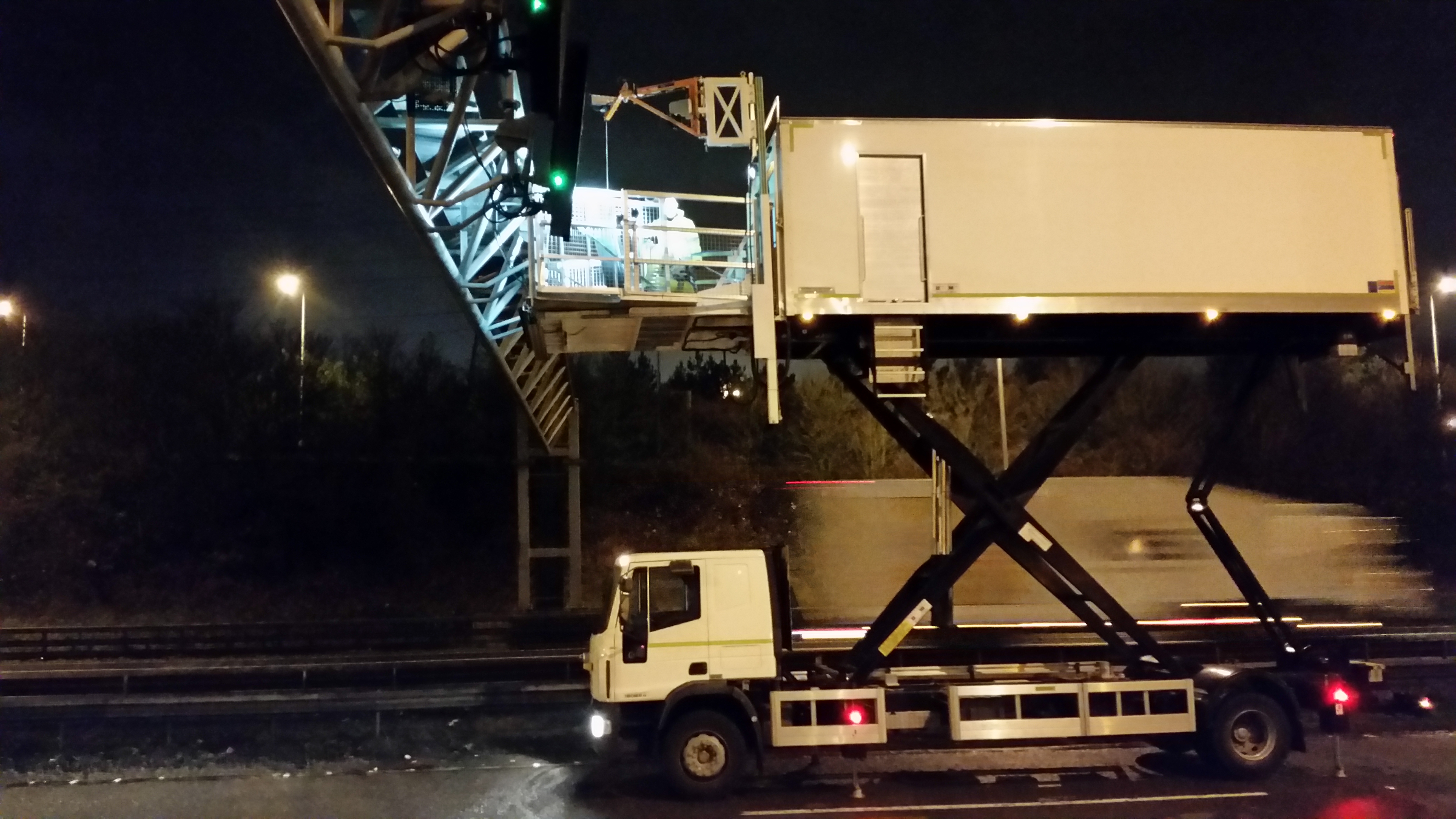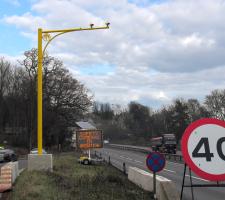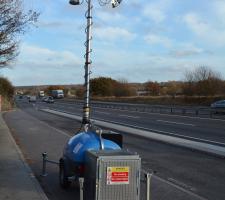
The UK government has recently been going to some lengths to paint a picture of a nation embracing a future of digital technology – understandably given the economic concerns arising from exiting the
The NIC’s Connected Future report ranked the UK 54th in a list of 80 countries, in terms of its national 4G coverage - below Albania, Morocco and Romania.
While the travelling public may be disadvantaged, getting reliable access to wireless communication on road networks is even more important for the management of work zones, if they are to benefit from modern technology. So what are the implications of poor wireless connectivity for highway authorities? What chance for those looking at how mobile ITS, such as CCTV and average speed cameras, can help the management of work zones?
Demand limited
Use of average speed cameras is now common on work zone sites on the principal motorway and trunk road network in the UK and beyond, many installed and operated by
According to the company’s sales and marketing director Geoff Collins, as use of average speed control has become a standard approach to maintaining safety, the specifics of how systems are set up has changed. Substantial fixed foundations and fibre-optic cable connections have been replaced by above-ground supports and data transmitted via 3G or 4G SIM cards in each camera.
Asked what issues of connectivity are commonly encountered out on site, Collins says: “Getting a good network signal is actually very rarely a problem for us. There’s always some form of wireless connectivity somewhere that we can use. It becomes a matter of working with the environment you find; designing around what’s there.
“Over the past five years, I’ve not been aware of any job where we couldn’t get a signal from somewhere.”
As the systems of measuring and reporting average speeds do not usually need live streaming of data, they place limited demand on continuous connectivity. If CCTV is in use, it’s invariably relayed to control centres via existing networks, or viewed from local monitoring stations.
Tipping point
This is a picture of what’s currently being done, using limited technology so far, on just principal roads. However, by far the majority of work zone sites operated by highway authorities, their contractors and other utilities, are on local road networks and often in rural or relatively remote locations.
Such sites individually encounter much smaller volumes of traffic, but by their nature they come and go at short notice in their thousands annually across any given local government area. It can be envisaged that better, more widespread 4G and 5G coverage could be the tipping point for better, more effective management of road networks.
“Deployment of 4G and even 3G technology is currently limited, generally speaking, but we’re going to see a greater reliance on roadside sensors and use of wireless connections for keeping communications and ITS working. The required connectivity may not be far off. While it’s mostly still being built-out, the capacity of 4G networks will improve as the technology evolves and 5G will follow,” Okas says.
“There has been a lot of hype around 5G and its heralded ‘gigabit capacity’, but the capacity and standards for it have not even been defined as yet and the reality could be different. [Communication] network operators do not have limitless pots of cash for investment; and 5G is not likely to be one technology, but a blend of Wi-Fi and other frequencies or types of wireless connection.”
Coverage will be key, Okas adds. For this there is a variety of options, such as mounting small cell base stations on camera poles and street furniture to provide the required coverage and capacity given the constraints of local topography. This would appear to present a relatively simple solution for providing the necessary power and connectivity, but the costs will still be significant.
Cost implications
Broad bandwidth means high frequencies of transmission and so limited range and a greater density of base stations. There will need to be a very robust business case for public investment.
“There will always be a cost implication. It’s just a question of what’s going to present the lowest whole life costs,” Okas says.
“If it’s left to the mobile phone operators, they’re only likely to deploy what earns. But if there’s a big spike in capacity demand, due to connected vehicles and better in-vehicle infotainment and driver assistance systems, who knows what will become viable? It’s all likely to drive a revolution in roadside infrastructure.”
The UK government has now responded to the Connected Future report with a digital strategy and funding for an ‘innovation hub’ for developing 5G technology. For piloting C-ITS systems, the government-owned
Pushing the case
The Compass 4D project, for instance, has already developed and piloted C-ITS systems of red-light violation warning, road hazard warning and energy efficient intersection (EEI – speed to green ) in seven European city areas. The UK project member, Newcastle City Council, produced a good set of results from its EEI pilot, showing a 12% fuel saving in the test area, but this only produced a 1% saving across the council vehicles’ total journeys.
Much greater penetration of the technology is needed to make the numbers really stack up. Ray King is a
“Getting a good business case together is now all-important for attracting investment, and for that we need a critical mass of deployment.”
Newcastle’s EEI relies only partly on 4G, just for a login procedure. Communication at intersections is via high-frequency, low-latency 802.11p, similar to V2V applications. But other systems, such as road-hazard warning, will need reliable 4G connectivity, particularly where rural locations need to communicate with traffic control centres.
The UK government has now produced a 5G development strategy, which confirms that this will be a blend of technologies, combining 4G with other wireless and fibre-optic connections. Standards are due to be agreed by 2019. Connected Future found coverage on UK road networks poor even for 2G voice call connectivity; 17% of A and B roads are in complete ‘not-spots’ and a further 42% have only partial coverage. So plenty of scope for improvement.













